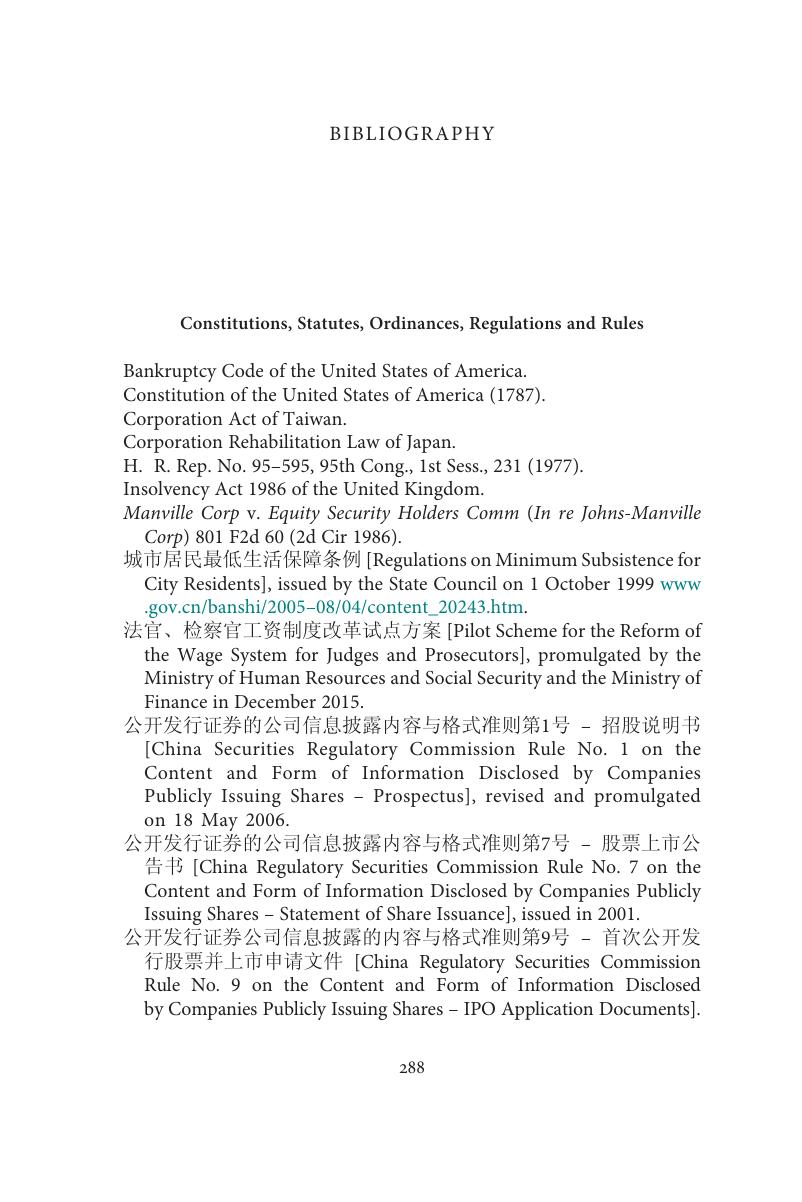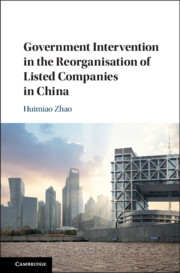Book contents
- Government Intervention in the Reorganisation of Listed Companies in China
- Government Intervention in the Reorganisation of Listed Companies in China
- Copyright page
- Dedication
- Contents
- Figures
- Tables
- Acknowledgements
- Abbreviations
- Reviews
- 1 Introduction to the Research
- 2 The Legislative Goals of the Enterprise Bankruptcy Law of the PRC
- 3 The Role of the Government in the 1986 EBL and 2006 EBL
- 4 Administrative Goals and Means of Government Intervention
- 5 Negative Impacts Exerted by Government Intervention on Bankruptcy Institutions
- 6 Balancing the Roles of Different Institutions for the Future Reform of China’s Bankruptcy Market
- Conclusion
- Appendices
- Bibliography
- Index
- References
Bibliography
Published online by Cambridge University Press: 20 December 2019
- Government Intervention in the Reorganisation of Listed Companies in China
- Government Intervention in the Reorganisation of Listed Companies in China
- Copyright page
- Dedication
- Contents
- Figures
- Tables
- Acknowledgements
- Abbreviations
- Reviews
- 1 Introduction to the Research
- 2 The Legislative Goals of the Enterprise Bankruptcy Law of the PRC
- 3 The Role of the Government in the 1986 EBL and 2006 EBL
- 4 Administrative Goals and Means of Government Intervention
- 5 Negative Impacts Exerted by Government Intervention on Bankruptcy Institutions
- 6 Balancing the Roles of Different Institutions for the Future Reform of China’s Bankruptcy Market
- Conclusion
- Appendices
- Bibliography
- Index
- References
Summary

- Type
- Chapter
- Information
- Publisher: Cambridge University PressPrint publication year: 2020



